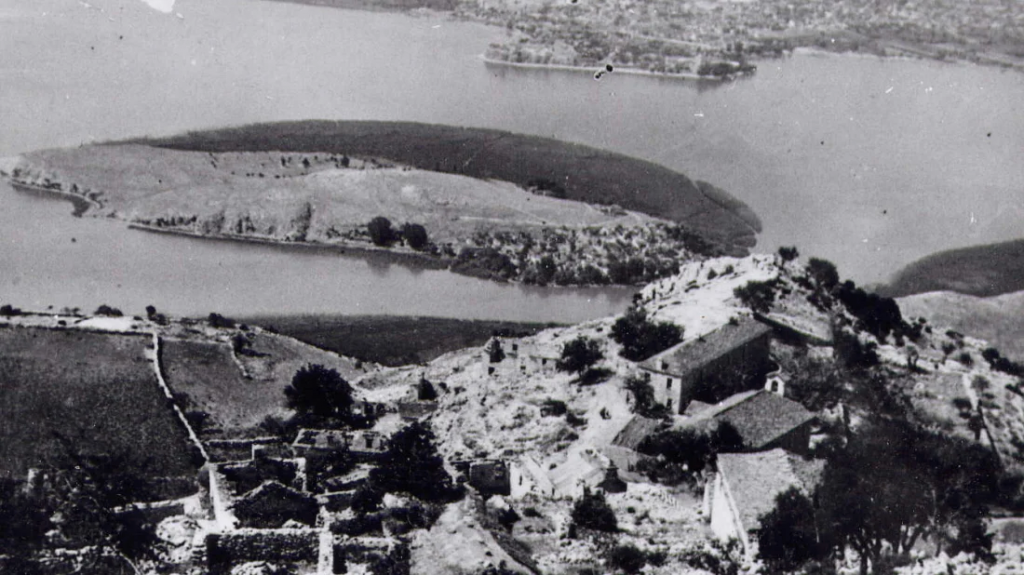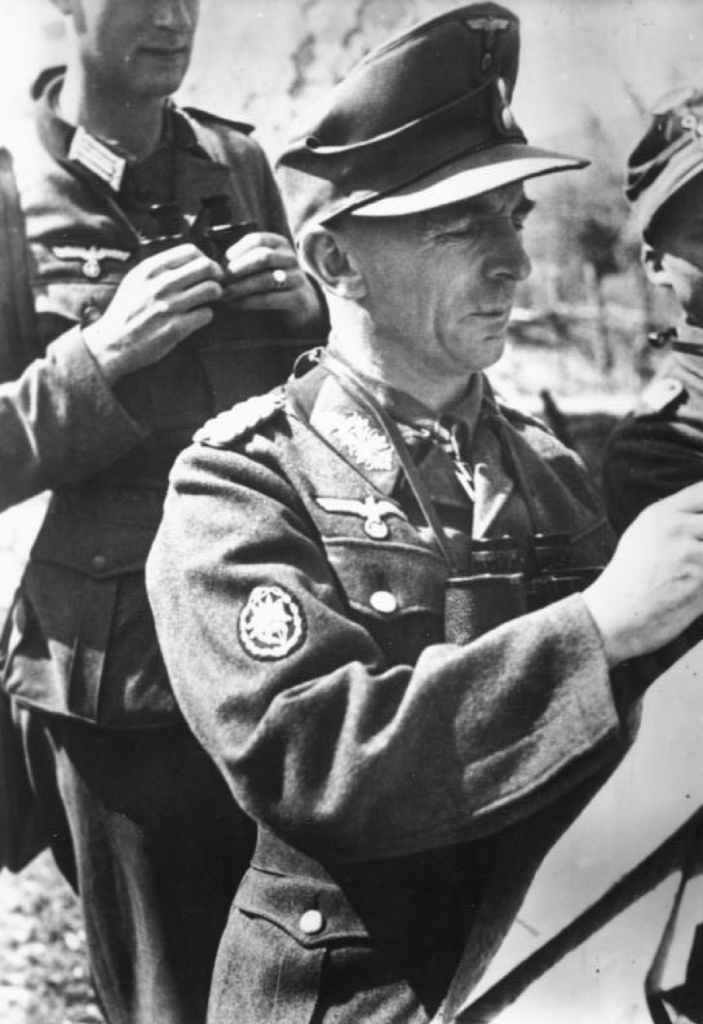
Background to the massacre in Lingiades
1. German military in Ioannina
The Italian army already tried in 1940 to invade Greece, however they were pushed back by the Greek resistance. They had to step back even behind their front lines in Albania. In 1941, after a successful invasion in Yugoslavia, the German Army invaded Greece and successfully made their way to Athens. After that Greece was splitter into three occupation zones with Epirus belonging to the Italian one.
The 1. Gebirgsdivision Edelweiss, led by Walter von Stettner arrived in Ioannina on the 9th of June, 1943. The were called back from the caucasian mountains, where they were famous for their atrocities. They came back through Yugoslavia and then led to Greece. One reason for this was also the fact that after the Allies defeated Germany and Italy in Africa they were expecting a landing on the long and wide coast of Western Greece.
Their main task was the so called “Bandenbekämpfung“, the German concept of countering resistance by partisans through extreme brutality. Their headquarters was at the confiscated Hotel Akropol. This Hotel still exists today on the Dodoni Street. So, although Ioannina was not in the German occupation zone, it was a focal point in the planning and conducting of many euphemistically called “Säuberungs- und Vergeltungsunternehmen“ (Operations of Cleansing and Retaliation). This meant that members of the “1st Mountain Division” committed bestial massacres on civilians in retaliation of partisan activities. One of these massacres happened in Ligiades.

The massacre
On October 1st, 1943, Josef Salminger, commander of the mountain infantry regiment 98 was on his way from Preveza to Ioannina. He was warned before that it was too dangerous due to the partisan activity but he decided to go anyways with one driver. Close to Mousiotitsa, another martyric village where the Germans had killed 152 people on the 25th of July and the 27th of August in 1943, they were ambushed by a unit of greek partisans. During the firefight, Salinger was killed.
On September 24th, Hubert Lanz, general of the 22 Gebirgs Armee Korps came from Athens to Ioannina and took the 1. Mountain division under his command. Thus, on the same day as Salminger’s death, Lanz ordered to take vengeance in a 20 km radius of the ambush (see picture on the right).
Without any further hesitation, the village of Ligiades was chosen for this reprisal. As the “Unternehmen Panther“ lay ahead – an undertaking that was supposed to carry German troops through the area of Stroumi and Ligiades – the Germans were especially afraid of partisans in that area. Additionally, as Ligiades was placed on a mountain, thus also called balcony, the members of the 98th “Mountain Infantry Regiment” wanted to state an example for the people in Ioannina and surrounding areas, as it was visible for all the areas around.
The direct order to attack the village came from Alfred Schröppel, commander of the Feldersatzbataillon 79, also a part of the 1. mountain division Edelweiss.

On the day of the massacre, the attack started with shooting at the village from the island in the lake of Ioannina with artillery, during which, according to survivors, nobody lost his or her life. Thereupon, the “Wehrmacht” drove with trucks up to the village. They searched every house, pillaged valuable goods, and afterwards burned down the houses. The villagers were rounded up in groups of 10 to 15 people and shot dead.
On this day 82 people in Ligiades and 2 in Struni were killed by the German Wehrmacht. They also mass-raped two women and burned them alive afterwards. Only five people survived the attack. These five people only survived because they pretended to be dead as they were lying injured under the dead bodies of their children, parents or neighbors. The only survivor that still lives today is Panos Babousikas. He was born on July 16th, 1942 and thus 15 months old when the massacre happened. He was found in the arms of his dead mother, drinking her cold milk. The Germans jabbed him with a bajonett in his back, leaving a 30 – 40 cm scar that he still has to this day.
However, most of the villagers were absent from the village, as they were gone to harvest walnuts. This also explains why most of the people killed were either young children or older people. When the first villagers returned that day at around 6pm, the massacre in its entirety became visible. All together 43 houses and 6 barns were destroyed by the flames, except for the church and the schoolhouse.
Source of pictures: Municipal Museum of Kalavritan Holocaust